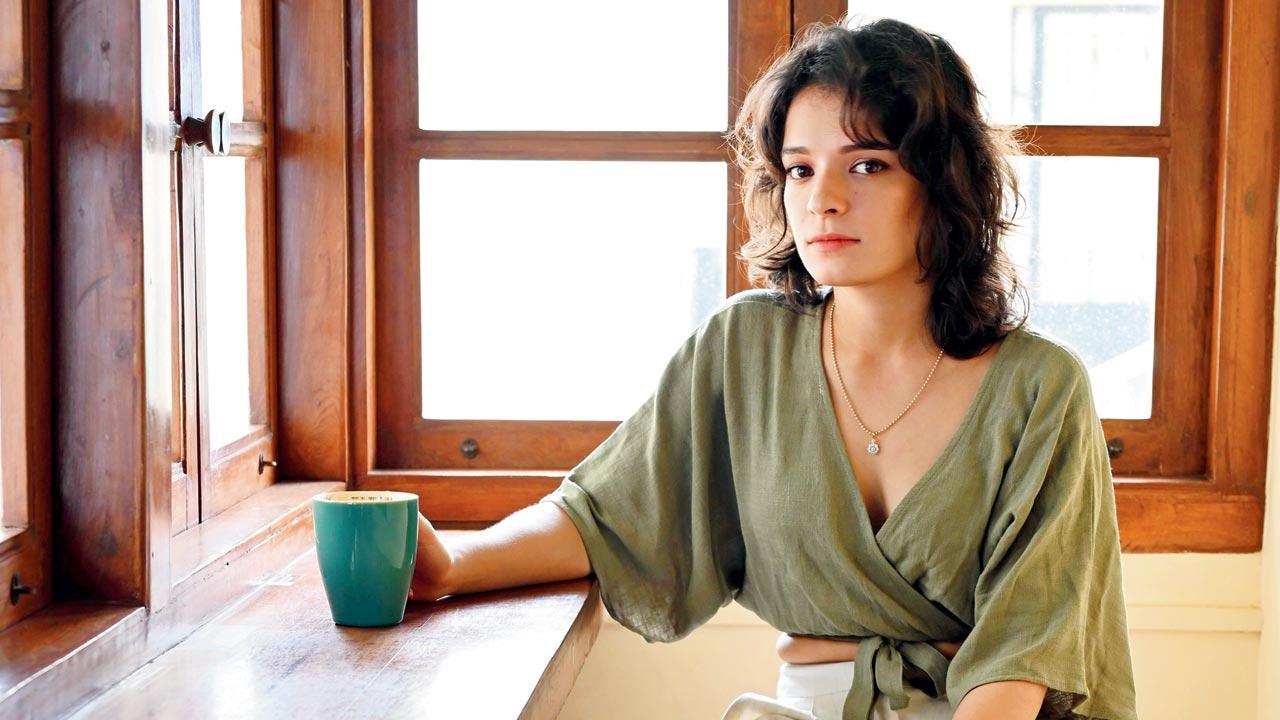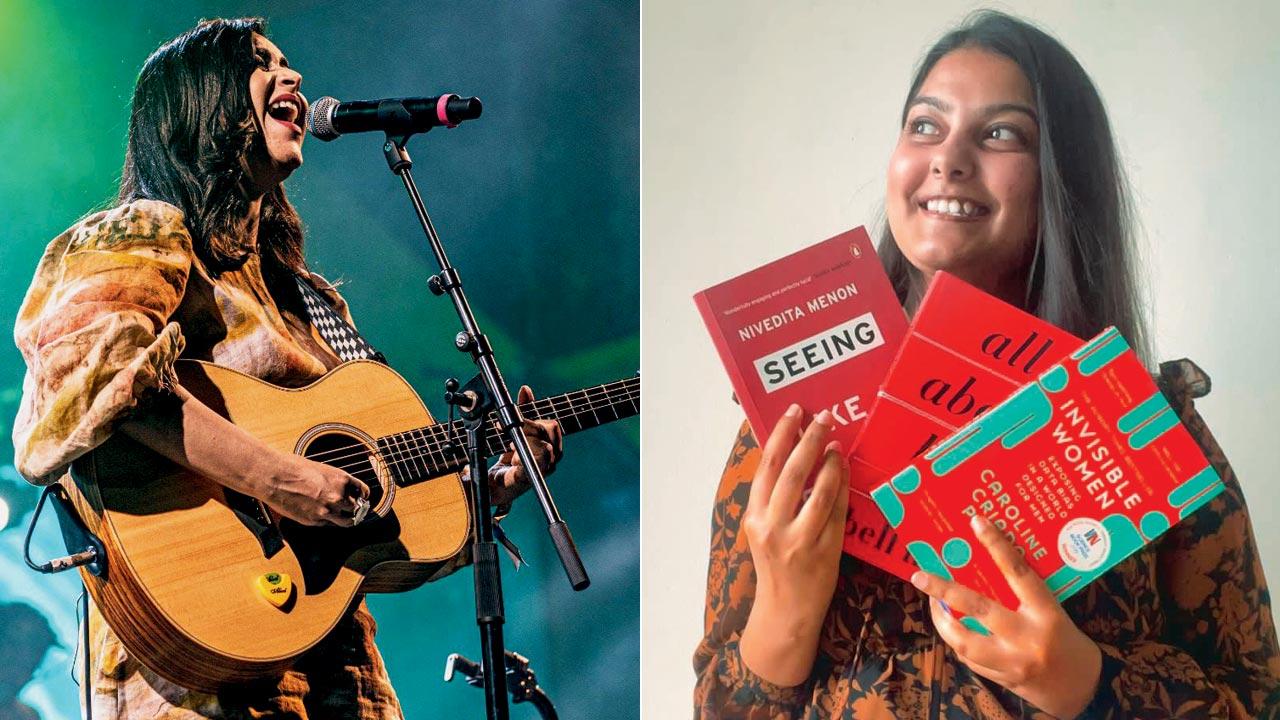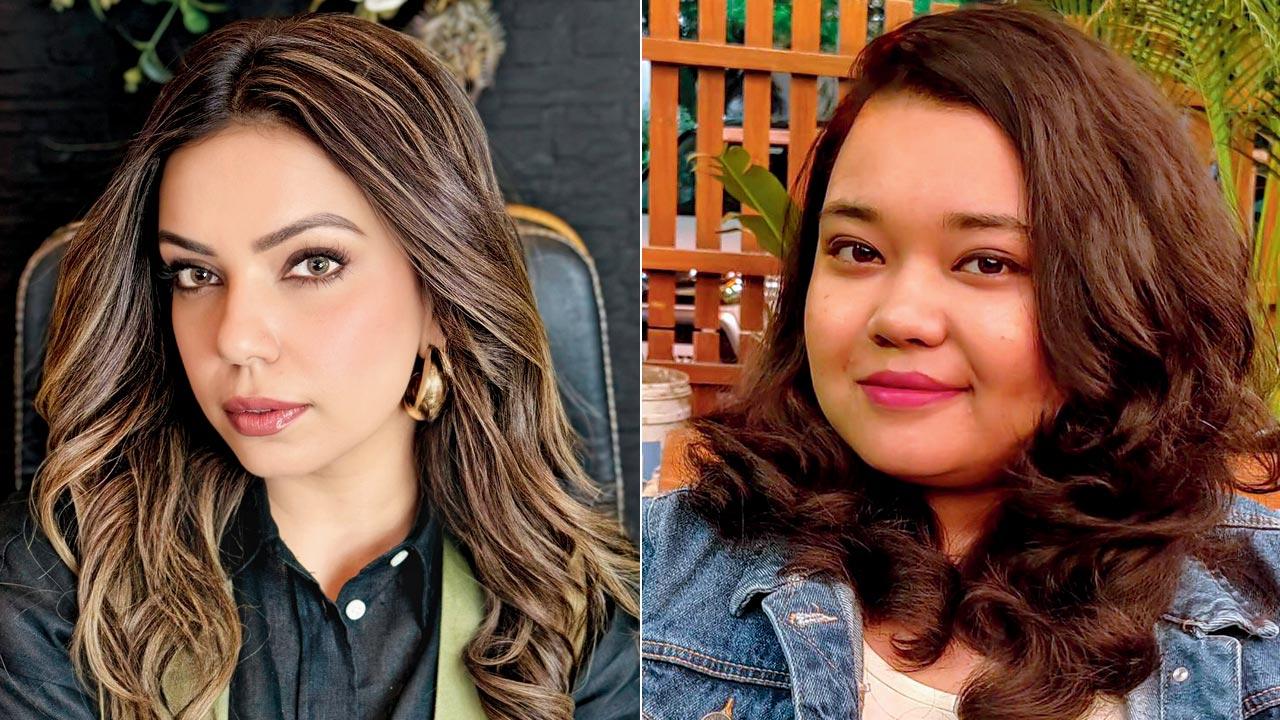Not bleak and depressive, the sad girl aesthetic is beyond being blue… it’s self-love and self-awareness

Shriya Ghiya, a BMM College from Jai Hind College who identifies with the sad girl trend. Pic/Anurag Ahire
It reassures me that I’m not alone.” Shriya Ghiya, a BMM student from Jai Hind College, finds solace in the emerging Sad Girl trend.
ADVERTISEMENT
“In a world where women are unable to express their emotions freely and are often stigmatised, this trend provides them a safe space to be vulnerable,” she remarks.
Initially popularised by Tumblr a decade or so ago, the sad girl phenomenon has recently been reimagined and emerged as a prominent aesthetic of unconventional ‘flawed’ femininity. From books like Normal People and My Year of Rest and Relaxation, musicians such as Fiona Apple and shows like Fleabag, Sad Girl have found a prominent place in media globally, and also amongst Indian audiences.
 Singer-songwriter Maalavika Manoj AKA Mali. Pic/Kirit Surve Parade
Singer-songwriter Maalavika Manoj AKA Mali. Pic/Kirit Surve Parade
Ghiya specifically resonates with the Sad Girl music of Phoebe Bridgers and Mitski. “Their music makes me feel seen,” says the third-year college student. “Being at a concert, surrounded by hundreds of people singing the same lyrics and connecting with each other on these songs, gives a sense of representation and belonging.”
Like King Midas, Sad Girl is touching everything from music to cinema and literature, and turning it a darker shade of blue. Sad Girl Core is going to offline events too. Day One, an Indie singer/songwriter label under Sony Music, is organising Sad Girls’ Happy Hours for artists and audiences to find solidarity in sadness. The importance of translating difficult emotions into art to be shared is an undercurrent, especially for artists who are agential in creating the spaces of collective catharsis that the subgenre emphasises.
“Even when we’re sad, we act as a turbine to channel sad emotions into happy ones,” says Maalavika Manoj aka Mali, Mumbai-based singer and songwriter who will be performing at the first Sad Girls’ Happy Hours live event at Bandra’s Pioneer Hall.
 Mumbai based singer and songwriter Kamakshi Khanna performing; (right) Bookstagrammer Surbhi Sinha posing with her book collection
Mumbai based singer and songwriter Kamakshi Khanna performing; (right) Bookstagrammer Surbhi Sinha posing with her book collection
“For many of us who write songs, when we’re sad and contemplative is when the thoughts and feelings and ideas really flow. When we’re happy, we’re not thinking of how we can write. Melancholy makes people sit down and think.” She likens the myriad flavours of sad to shades of red, recognising the superpower that artists have, “to be able to paint a room that we’re not even in.”
To have a subgenre defined by low emotions is a tricky line to walk; Mali cautions against its glorification. Instead, she emphasises on the importance of recognising that every emotion—including being low—is natural and integral for authenticity as an artiste. “To be vulnerable and real, just for a second at this event, would be a wonderful outcome,” says Mali. “People are not authentic anymore—everyone is hiding behind a brand, a filter—and so I’m looking forward to this evening of authenticity, rather than sadness.”
Another artiste performing at Sad Girls’ Happy Hour event is Kamakshi Khanna, a singer/songwriter originally from Delhi, who shuttles between her home city and Mumbai. “Women have a beautiful perspective to offer that I hope India recognises through this trend,” she reflects. Much of her music delves into poignant themes like the exploration of one’s own vulnerability, and embracing the entire spectrum of feelings that one feels. Her latest EP, Heartbreak 2020, features songs like ‘Tourist’ and ‘I Blew It!’ that express all forms of heartbreak, from fleeting to intense.
 Nilofer Radiowala and Mridula Gupta
Nilofer Radiowala and Mridula Gupta
Literature has always had Sad Girls. “Works of Sylvia Plath and Virginia Woolf have long depicted characters embodying this trope. However, while their stories may align with sad girl themes today, they have always been portrayals of rage, vulnerability and the nuanced aspects of womanhood.” Surbhi Sinha, a bookstagrammer (@theurban_reader) remarked.
Even though books by Indian authors like Tapestry of the Mind and Other Stories by Aneeta Sundaraj, an anthology featuring women confronting moments of betrayal, poignancy, and heartache; and Summer of Then by Rupleena Bose, a story about a 26-year-old English literature PhD student navigating her writing, livelihood, morality, and heart, align with the Sad Girl trope, they are yet to be labelled such. Outside of metropolitan cities, the broader audience in India is not as engaged with Western literature where this trend is predominantly popular.
Relatability is the primary reason people are drawn to the Sad Girl aesthetic. “People find familiarity in sadness; it gives them a sense of connection,” says Mridula Gupta, who also has a bookstagram account (@shelfadmirer).
However, she says, this is also why some criticise the trend, arguing that it focuses too much on misery and becomes one-dimensional over time. “Grief and trauma, when unhealed, can damage one’s psyche. There is little discussion about coping with profound sadness, which can have dangerous consequences,” Mridula points out.
The beauty community also has its own version with the crying girl makeup trend, first popularised in 2022 by beauty influencer Zoe Kenealy. It mimics a post-cry appearance, with tear-stained cheeks with dewy, flushed skin, a hint of red around the eyes and lips, and subtly defined brows.
“The trend is a complex form of expression,” states influencer and celebrity makeup artist, Nilofer Radiowala. “On one hand, it allows individuals to creatively explore and communicate their emotions through the art of makeup. However, there’s a risk that such trends might unintentionally trivialise or potentially overlook the genuine struggles people face.”
 Subscribe today by clicking the link and stay updated with the latest news!" Click here!
Subscribe today by clicking the link and stay updated with the latest news!" Click here!












